Dr. Nelson Oppermann discusses a technique to correct a narrow maxilla
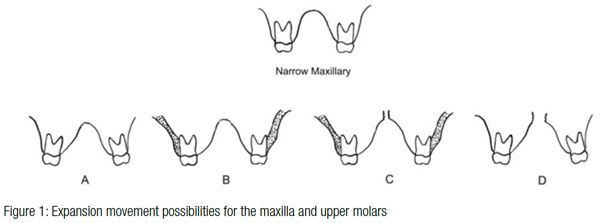 A narrow maxilla is a common problem in orthodontics. Approximately 80% of orthodontic patients need some type of arch expansion.
A narrow maxilla is a common problem in orthodontics. Approximately 80% of orthodontic patients need some type of arch expansion.
[userloggedin]
1 The incidence of posterior crossbite is high and is present in more than 50% of the orthodontic cases, with the upper molars being affected in more than 80% of the cases, and the lower molars affected in more than 19% of those cases.2
 A narrow upper arch can produce undesired transverse growth changes. In order to intercept abnormal development and properly guide the patient’s growth into a physiological pattern, it is necessary to expand the maxilla. Maxillary expansion will avoid occlusion problems that can produce occlusal and facial disharmony (asymmetries). The crossbite cannot be corrected without treatment, regardless of the etiology and modality of clinical occurrence.3 Early crossbite corrections lead to a stable and normal occlusion pattern and contribute to symmetrical condyle growth, harmonious TMJ, and overall growth in the mandible.4-7 Young patients should start visiting the orthodontist around 4 years of age. Thus, the orthodontist can identify and intercept a narrow maxilla early, avoiding late treatment and the risk of creating a symmetrical occlusion in an asymmetrical skeletal system. Waiting until after 9 years old can lead to TMJ problems and future relapse.8
A narrow upper arch can produce undesired transverse growth changes. In order to intercept abnormal development and properly guide the patient’s growth into a physiological pattern, it is necessary to expand the maxilla. Maxillary expansion will avoid occlusion problems that can produce occlusal and facial disharmony (asymmetries). The crossbite cannot be corrected without treatment, regardless of the etiology and modality of clinical occurrence.3 Early crossbite corrections lead to a stable and normal occlusion pattern and contribute to symmetrical condyle growth, harmonious TMJ, and overall growth in the mandible.4-7 Young patients should start visiting the orthodontist around 4 years of age. Thus, the orthodontist can identify and intercept a narrow maxilla early, avoiding late treatment and the risk of creating a symmetrical occlusion in an asymmetrical skeletal system. Waiting until after 9 years old can lead to TMJ problems and future relapse.8
Correcting the narrow maxilla fostered an increase in the mandibular width measurement and released the mandible to a normal transverse growth.
 When considering arch expansion, the practitioner should always consider proper diagnosis and planning procedures in the three planes of the space, converting information from the models, comprehensive cephalometrics analysis (lateral and frontal), and divine proportions analysis.29 The posteroanterior radiograph is a very important tool to be used when analyzing the transverse plane.
When considering arch expansion, the practitioner should always consider proper diagnosis and planning procedures in the three planes of the space, converting information from the models, comprehensive cephalometrics analysis (lateral and frontal), and divine proportions analysis.29 The posteroanterior radiograph is a very important tool to be used when analyzing the transverse plane.
Maxillary expansion procedures can be divided into two major categories, according to previous literature. The first, rapid maxillary expansion (RME), is a procedure that is generally accomplished by using an appliance that incorporates a screw — for example, a Haas or Hyrax. These appliances tend to disrupt the midpalatal suture. The second category for maxillary expansion is the slow maxillary expansion group. These appliances apply slow and continuous forces that do not attempt, as a main objective, to open the midpalatal suture. These appliances include removable expansion plates, the W arch (also known as the Porter arch), and Quad-Helix. The Quad-Helix was developed in 1975 by Robert Murray Ricketts from Porter’s W arch, adding four loops to the appliance, increasing the wire length on 40 mm to 50 mm. The objective was softening the forces and better control molar rotations.32 Many authors have written that the Quad-Helix appliance can deliver sufficient forces to promote skeletal changes on maxillary bone in younger patients (during deciduous and mixed dentitions phases). 2, 7, 10-13, 15, 17-19
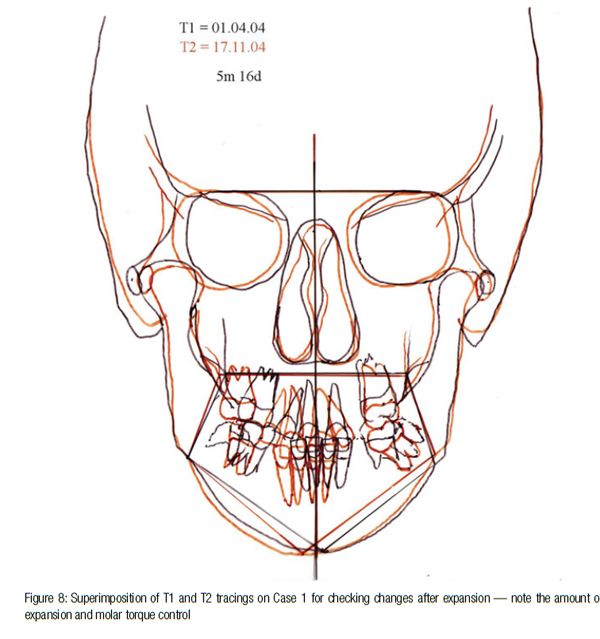
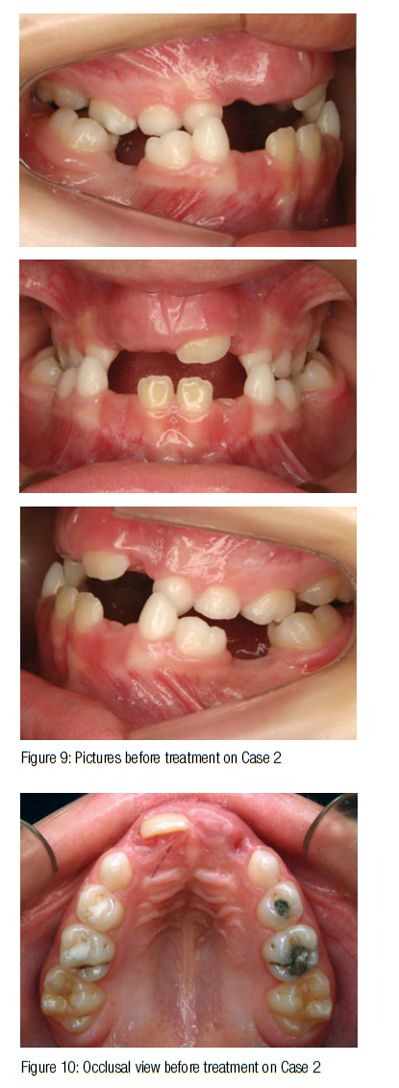 Slow maxillary expansion, using the Quad-Helix appliance, is a recommended choice, and it is widely accepted and applied by orthodontists. Many practitioners prefer the Quad-Helix as an expansion device because it is a very versatile appliance, with applications such as molar rotation control, torque, and tipping control. It can also produce advancement in the incisor region and create greater anterior expansion, resulting in an improved arch form (taking advantage of the anterior arms that deliver a “sweeping action”). Furthermore, the practitioners don’t need the patient’s or parent’s cooperation to reach the set objectives.7,19-21
Slow maxillary expansion, using the Quad-Helix appliance, is a recommended choice, and it is widely accepted and applied by orthodontists. Many practitioners prefer the Quad-Helix as an expansion device because it is a very versatile appliance, with applications such as molar rotation control, torque, and tipping control. It can also produce advancement in the incisor region and create greater anterior expansion, resulting in an improved arch form (taking advantage of the anterior arms that deliver a “sweeping action”). Furthermore, the practitioners don’t need the patient’s or parent’s cooperation to reach the set objectives.7,19-21
Transverse maxillary expansion is achieved using a combination of movements, such as (A) buccal tooth version, (B) alveolar bone and molar buccal translation combined with molar torque control, (C) midpalatal suture opening and buccal molar translation, (D) midpalatal suture disrupting, and a combination of two or more of those factors (Figure 1).3
It is possible, when the treatment plan demands, to open the midpalatal suture on a young growing patient from 400 g of transverse pressure applied.10,22
The amount of force delivered by the Quad-Helix depends on two major factors: Quad-Helix construction and amount of activation. Basically, the Quad-Helix is constructed by 4 helicoids on .036 round wire. Dr. Ricketts recommends the use of blue Elgiloy® wire to deliver softer amount of forces and easier bending.
In general, using the Quad-Helix for treatment leads to skeletal changes in maxillary bone, when desired by the practitioner and indicated in the treatment objectives. Adjustments are made by simply changing the amount and frequency of the activations. The Quad-Helix can provide a force range from 221 grams to 1,149 grams. The Quad-Helix can rotate the supporting molars, and it can be adjusted to expand the molars and anterior teeth differentially.17 It can also be used to control molar torquing. These features make the Quad-Helix a very versatile appliance.
It is observed that when correctly employed, the Quad-Helix can produce similar results to the RMEs and also correct all transverse problems in growing patients.8 These findings also coincide with what Cotton concluded after his work with monkeys.26 Hicks reported substantial skeletal changes with slow expansion, especially in younger children.11 Additionally, slow expansion is related to a more physiological reorganization of the maxilla in the three planes of the space, providing more stability and less relapse possibilities than RMEs. We can observe these findings in the works produced by Ohshima26
and Storey.27
 Usually, the conventional Quad-Helix is cemented pre-activated with a certain amount of expansion. When the case being treated needs extra amounts of activations, normally the clinicians can do it using a three-jaw plier inside the mount. This modality of activation strongly depends on the practitioner’s experience to control the amount of force and movements delivered. Due to this situation, it is found in the literature that some authors recommend removing the Quad-Helix out of the mouth to place new actions and recement it after these changes. To avoid removing and recementing the bands, many practitioners usually construct the Quad-Helix to be inserted on lingual sheath tubes for horizontal insertion and removing. Also, this kind of Quad-Helix is prefabricated from many ortho manufacturers.
Usually, the conventional Quad-Helix is cemented pre-activated with a certain amount of expansion. When the case being treated needs extra amounts of activations, normally the clinicians can do it using a three-jaw plier inside the mount. This modality of activation strongly depends on the practitioner’s experience to control the amount of force and movements delivered. Due to this situation, it is found in the literature that some authors recommend removing the Quad-Helix out of the mouth to place new actions and recement it after these changes. To avoid removing and recementing the bands, many practitioners usually construct the Quad-Helix to be inserted on lingual sheath tubes for horizontal insertion and removing. Also, this kind of Quad-Helix is prefabricated from many ortho manufacturers.
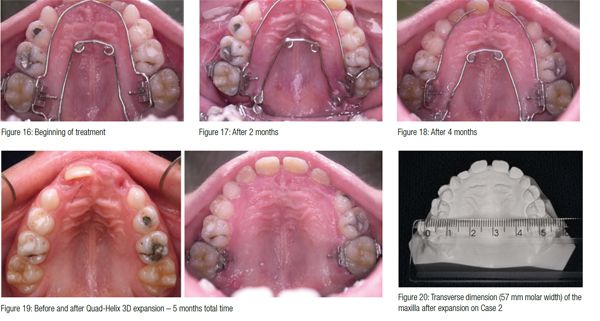 In 1983, Wilson and Wilson30 presented to the orthodontics community an inserting/removing system called the 3D® Fixed/Removable® System (Wilson®). This kind of insertion brought practitioners versatility and easier inserting/removing procedures due to an innovative vertical insertion. Using the Wilson 3D Quad-Helix, it is possible and much easier to control the molars on the three planes of space during all expansion movements. Its fitting system is composed of two stamped posts laser-soldered to the Blue Elgiloy .038” Quad-Helix (Figure 2) and vertical inserting tubes (Figure 3). The 3D Quad-Helix very precisely allows the orthodontists to control the amount of forces employed and to control molars in the three planes of the space, strongly increasing movement control. Dr. Wilson recommends installing the appliance at the patient’s first visit in absolute passive to malocclusion, and starting to activate the 3D Quad-Helix on a second visit. New activations should be posted on 40-day periods; in the majority of cases, the activation cannot exceed 1 mm to 2 mm in order to keep cases under control (Figures 4-6). Also, as it is prefabricated on six different sizes, the orthodontists can save time and money, avoiding laboratory steps, and providing the ability to install it chairside with quite a few adaptations. No doubt, the launch of the Wilson 3D Quad-Helix in the market boosts the control of expansion forces, the inserting/removing system, keeping the molars properly torqued, tipped, and rotated during all the expansion moments.
In 1983, Wilson and Wilson30 presented to the orthodontics community an inserting/removing system called the 3D® Fixed/Removable® System (Wilson®). This kind of insertion brought practitioners versatility and easier inserting/removing procedures due to an innovative vertical insertion. Using the Wilson 3D Quad-Helix, it is possible and much easier to control the molars on the three planes of space during all expansion movements. Its fitting system is composed of two stamped posts laser-soldered to the Blue Elgiloy .038” Quad-Helix (Figure 2) and vertical inserting tubes (Figure 3). The 3D Quad-Helix very precisely allows the orthodontists to control the amount of forces employed and to control molars in the three planes of the space, strongly increasing movement control. Dr. Wilson recommends installing the appliance at the patient’s first visit in absolute passive to malocclusion, and starting to activate the 3D Quad-Helix on a second visit. New activations should be posted on 40-day periods; in the majority of cases, the activation cannot exceed 1 mm to 2 mm in order to keep cases under control (Figures 4-6). Also, as it is prefabricated on six different sizes, the orthodontists can save time and money, avoiding laboratory steps, and providing the ability to install it chairside with quite a few adaptations. No doubt, the launch of the Wilson 3D Quad-Helix in the market boosts the control of expansion forces, the inserting/removing system, keeping the molars properly torqued, tipped, and rotated during all the expansion moments.
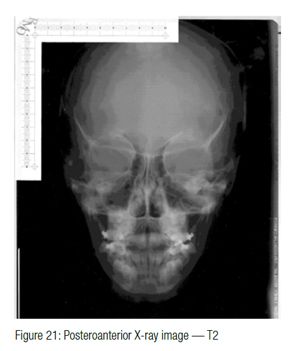
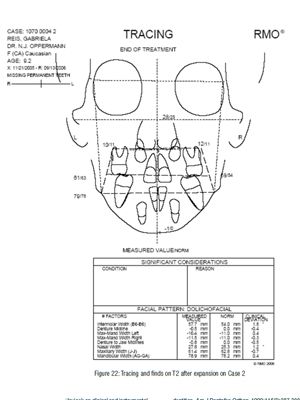 Clinical Case 1, shown in Figures 7 and 8, exemplifies the expansion and molar 3D control using the 3D Quad-Helix. It is noticeable how the upper molars were expanded with complete torque control.
Clinical Case 1, shown in Figures 7 and 8, exemplifies the expansion and molar 3D control using the 3D Quad-Helix. It is noticeable how the upper molars were expanded with complete torque control.
 In Case 2, it is easy to see the features and possibilities of the 3D Quad-Helix during an expansion treatment. Note the severe transverse problem in the beginning and the high amount of expansion obtained after treatment, noticeable on models measurement, an 8 mm of total molar expansion. The P.A. tracings showed 2.3 mm increasing of J-J width, 8.6 mm on upper molar width, and 3.1mm enlargement on nasal cavity width. Similar to Case 1, the upper molars had the upper molars torque properly controlled.
In Case 2, it is easy to see the features and possibilities of the 3D Quad-Helix during an expansion treatment. Note the severe transverse problem in the beginning and the high amount of expansion obtained after treatment, noticeable on models measurement, an 8 mm of total molar expansion. The P.A. tracings showed 2.3 mm increasing of J-J width, 8.6 mm on upper molar width, and 3.1mm enlargement on nasal cavity width. Similar to Case 1, the upper molars had the upper molars torque properly controlled.
The full 3D system kit also contains other appliances, and the orthodontist can choose, according to needs, the right appliance for each case, and/or exchange the appliance during the treatment without removing the molar bands. Dr. Wilson calls this full kit the Wilson 3D Toolbox.
I strongly recommend to orthodontists to use the vertical inserting system developed by Dr. Wilson. We can keep expansions and upper molars fully 3D controlled due to the inventive fitting system and save our precious time cutting off lab steps. Also, it is cost-effective. No doubt, a great upgrade on Dr. Ricketts’ invention!
- Bench RW, et al. Terapia Bioprogressiva. 3a Edição. São Paulo: Editora Santos; 1996.Ia
- Bench RW, Gugino CF, Hilgers JJ. Bioprogressive Therapy. Part 8. J Clin Orthod. 1978; 12(4): 279-298.
- Langlade M. Otimização terapêutica da incidência transversal das oclusões cruzadas posteriores. 1a Edição. São Paulo: Editora Santos; 1998.
- Kutin G. Hawes RR. Posterior cross-bites in the deciduous and mixed dentition. Am J Orthod. 1969;56(5):491-504.
- Harberson VA, Myers DR. Midpalatal suture opening during functional posterior cross-bite correction. Am J Orthod. 1978;74 (3):310-313.
- Vadiakas GP, Roberts MW. Primary posterior crossbite: diagnosis and treatment. J Clin Pediatr Dent. 1991;16(1):1-4.
- Myers DR, Barenie JT, Bell RA, Williamson EH. Condylar position in children with functional posterior crossbites: before and after crossbite correction. Pediatr Dent. 1980; 2(3):190-194.
- Bell, RA, LeCompte EJ. The effects of maxillary expansion using a quad-helix appliance during the deciduous and mixed dentitions. Am J Orthod. 1981;2(79):152-161.
- Slavicek R. Dr. Rudolf Slavicek on clinical and instrumental functional analysis for diagnosis and treatment planning. Part 1. J Clin Orthod. 1988;(22)6:358-370.
- Chaconas SJ, de Albay y Levy JA. Orthopedic and orthodontic applications of the quad-helix appliance. Am J Orthod. 1977;72(4):422-428.
- Hicks EP. Slow maxillary expansion: a clinical study of the skeletal versus dental response to low-magnitude force. Am J Orthod. 1978;73(2):121-141.
- Frank SW, Engel GA. The effects of maxillary quad-helix appliance expansion on cephalometric measurements in growing orthodontic patients. Am J Orthod. 1982;
- 81(5):378-389.
- Chaconas SJ, Caputo AA. Observation of orthopedic force distribution produced by maxillary orthodontic appliances. Am J Orthod. 1982; 82(6):492-501.
- Silva Filho OG, Alves RM, Capelozza Filho L. Alterações cefalométricas ocorridas na dentadura mista após o uso de um expansor fixo tipo Quadrihélice. Ortodontia. 1986; 19(1-2): 22-33.
- Proffit WR, Ortodontia Contemporânea. Pancast Editora Com e Repes Ltda. 1991.
- Ladner PT, Muhl ZF. Changes concurrent with orthodontic treatment when maxillary expansion is a primary goal. Am J Orthod Dentofacial Orthop. 1995;108(2):184-193.
- Brin I, Ben-Bassat Y, Blustein Y. Skeletal and functional effects of treatment for unilateral posterior crossbite. Am J Orthod Dentofacial Orthop. 1996;109(2):173-179.
- Sandikçioglu M, Hazar S. Skeletal and dental changes after maxillary expansion in the mixed dentition. Am J Orthod Dentofacial Orthop. 1997;111(3):321-327.
- Boysen B, La Cour K, Athanasiou AE, Gjessing PE. Three-dimensional evaluation of dentoskeletal changes after posterior cross-bite correction by quad-helix or removable appliances. Br J Orthod. 1992;19(2):97-107.
- Erdinç AE, Ugur T, Erbay E. A comparison of different treatment techniques for posterior crossbite in the mixed dentition. Am J Dentofac Orthop. 1999;116(3):287-300.
- Gugino CF. An Orthodontic Philosophy. Denver, CO: RM/Comunicators; 1977.
- Ranta R. Treatment of unilateral posterior crossbite: comparison of the quad-helix and removable plate. ASDC J Dent Child. 1988;55(2):102-104.
- Mazzieiro ET, Henriques JFC, Freitas MR de. Estudo cefalométrico, em norma frontal, das alterações dento esqueléticas após a expansão rápida da maxila. Ortodontia. 1996; 29(1):31-34.
- Siqueira DF, de Almeida RR, Henriques JFC. Estudo comparativo, por meio de analise cefalométrica em norma frontal, dos efeitos dentoesqueléticos produzidos por três tipos de expansores palatinos. R Dental Press Ortodon Ortop Facial. 2002;7(6):27-47.
- Cotton LA. Slow maxillary expansion: skeletal versus dental response to low magnitude force in Macaca mulatta. Am J Orthod. 1978;73(1):1-23.
- Ohshima, O. Effects of lateral expansion force on the maxillary structure in Cynomolgus monkey. J Osaka Dent Univ. 1972;6(1):11-50.
- Storey A. Tissue response to the movement of bones. Am J Orthod. 1973;64(3):229-247.
- Urbaniak JA, Brantley WA, Pruhs RJ, Zussman RL, Post AC. Effects of appliance size, arch wire diameter, and alloy composition on the in vitro force delivery of the quad-helix appliance. Am J Dentofacial Orthop. 1988;94(4):311-316.
- Ricketts, MR. The logic and keys to bio philosophy and treatment mechanics. American Institute for Bioprogresive Education; 1996.
- Wilson W, Wilson Wilson R. Modular 3D lingual appliance. Part I – Quad-Helix. J Clin Orthod. 1983;761-766.
- Wilson W, Wilson R. Force systems mechanotherapy manual – book 2, Denver: RMO; 1989.
- Duarte, M.S. O aparelho quadrihélice (quad-helix) e suas variações. R Dental Press Ortodon Ortop Facial. 2006; 11(2):128-156.
Stay Relevant With Orthodontic Practice US
Join our email list for CE courses and webinars, articles and mores

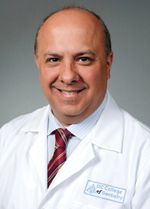 Dr. Nelson Oppermann obtained his Orthodontics Specialty Certificate in 1993 from the Dentist’s Association of Sao Paulo and Master’s Degree in Oral Sciences, focusing in orthodontics from SL Mandic Dental School in 2005. Dr. Oppermann began the Foundation of Modern Bioprogressive Orthodontics. An active and enthusiastic professor and lecturer, Dr. Oppermann has taught orthodontists around the world about Bioprogressive Therapy.
Dr. Nelson Oppermann obtained his Orthodontics Specialty Certificate in 1993 from the Dentist’s Association of Sao Paulo and Master’s Degree in Oral Sciences, focusing in orthodontics from SL Mandic Dental School in 2005. Dr. Oppermann began the Foundation of Modern Bioprogressive Orthodontics. An active and enthusiastic professor and lecturer, Dr. Oppermann has taught orthodontists around the world about Bioprogressive Therapy.
